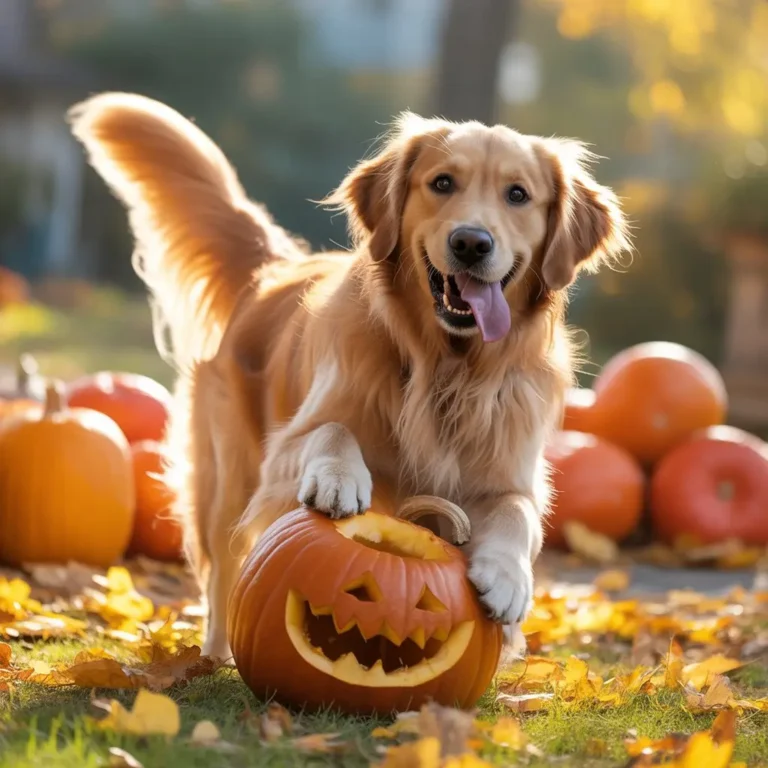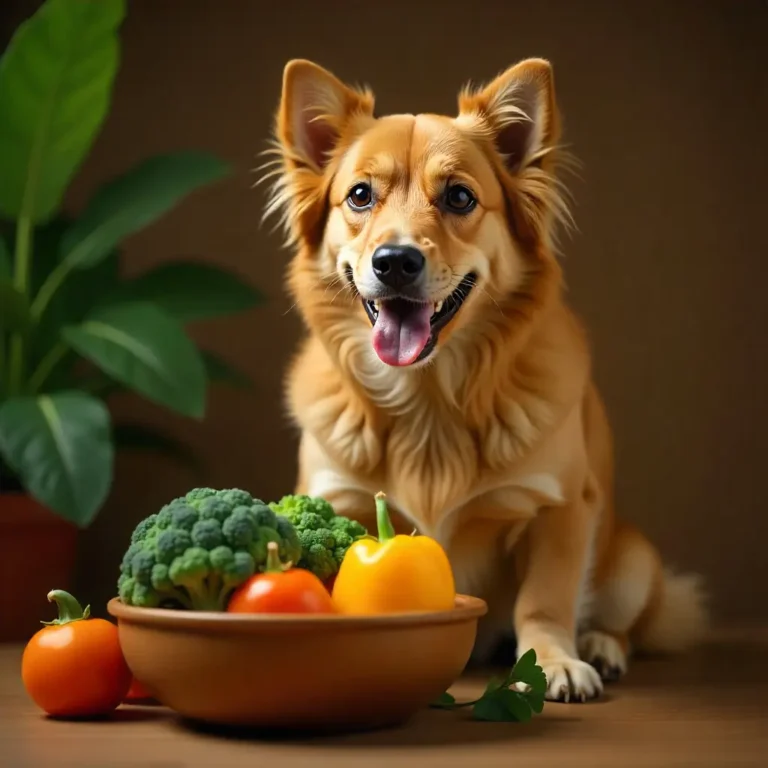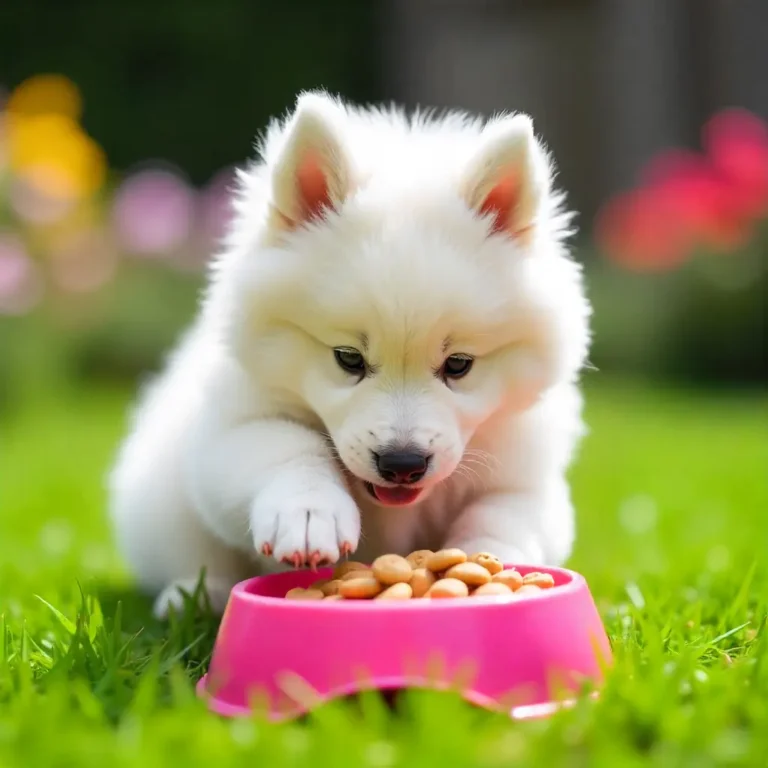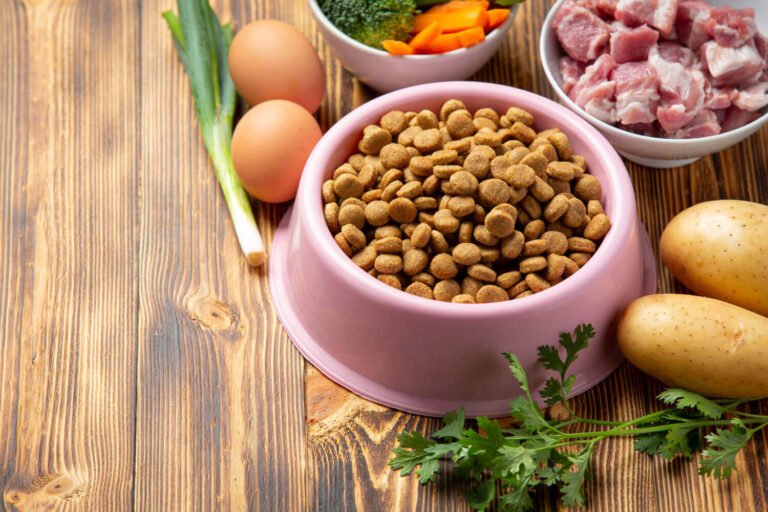Feeding a Chihuahua the same food as a Great Dane? Yikes, that’s a no-no.
When it comes to choosing the best dog food by breed size, one-size-fits-all just doesn’t cut it. Small breeds have faster metabolisms and need calorie-dense meals, while large breeds need controlled calories and nutrients that support bone and joint health. Feeding them the wrong formula can lead to serious health issues—like obesity, joint problems, or even undernourishment.
This guide is here to help you skip the guesswork and confidently choose the best dog food for your dog’s size—whether you’re parenting a tiny lap dog or a gentle giant.
1.Why Breed Size Matters When Picking Dog Food
Let’s bust a myth real quick: “Dog food is dog food — it’s all the same, right?”
Wrong. Dead wrong.
Feeding a tiny Chihuahua the same kind of food you’d give a hefty German Shepherd is like giving a toddler the meal of a bodybuilder. They may both be dogs, but their nutritional needs, bite sizes, digestion, and energy levels are totally different.
So if you’ve ever wondered what’s the best dog food by breed size, you’re asking the right question. This isn’t just about kibble size or calories. It’s about making sure your dog gets exactly what their body needs — whether they’re a small, zoomie-prone pup or a large, laid-back guardian.
Here’s why dog food by breed size matters more than you think:
Small breeds have fast metabolisms. They burn energy like crazy and need calorie-dense, nutrient-rich meals packed in small bites.
Large breeds grow slower and need controlled nutrition to avoid joint issues, obesity, and bone problems. Overfeeding them (especially as puppies) can be harmful.
Also, some brands offer breed-specific dog food, but that’s not always necessary. What matters more is the size-based formula — because that determines the right protein, fat, minerals, and kibble size.
So before grabbing whatever’s on sale at the pet aisle, let’s first figure out your dog’s size category.
2.Quick Quiz: Is Your Dog Small or Large Breed?
Okay, before diving into food picks, let’s answer the golden question:
Is your dog small breed or large breed?
Here’s a super quick guidelines to figure it out ⤵️
Small Breed Dogs (Typically Under 25 lbs)
Breeds like Chihuahua, Yorkie, Shih Tzu, Dachshund, French Bulldog
Adult weight: Under 25 pounds
High energy, small jaws, faster digestion
Need food with small bite kibble and high-calorie density
Large Breed Dogs (Typically Over 50 lbs)
- Breeds like Labrador, Golden Retriever, German Shepherd, Rottweiler
- Adult weight: Over 50 pounds
- Prone to joint issues, slower metabolism
- Need controlled calories, glucosamine-rich food, larger kibble
What About Medium Breeds (25–50 lbs)?
Some dogs like Border Collies or Bulldogs fall in the middle. In most cases, you can choose either small or large breed formulas depending on your dog’s energy level, weight, and activity. When in doubt, consult your vet — or better yet, use a dog food portion calculator to personalize it.
3.Small Breed Dogs: What They Really Need in Food
Let’s clear up a big misconception:
“Small dogs = small appetite = less nutrition needed.”
Nope. That’s not how it works.
In fact, small breed dogs often have higher energy needs per pound than big dogs. Their tiny bodies run on high-speed metabolism, and they burn calories faster. So, they actually need calorie-dense, nutrient-rich food — just in smaller servings.
Now let’s break down what exactly your small breed dog needs in their bowl each day:
Nutritional Needs for Small Breeds
Here’s the deal:
High Energy Support: Small dogs like Chihuahuas, Yorkies, or Dachshunds need more calories per pound than large dogs.
Tiny Teeth = Tiny Kibble: Regular kibble can be too big and hard to chew. Always look for small bite kibble or food labeled for “toy” or “small breeds.”
Balanced Nutrients: Look for omega-3s for skin, DHA for brain health, and good levels of protein for lean muscle.
Oh, and one more thing: small dogs often suffer from dental issues, so foods that support oral health are a smart bonus.
Best Types of Food for Small Breeds
Wondering whether to go wet or dry? Or grain-free vs grain-inclusive?
Here’s a quick overview:
Dry Food: Convenient, budget-friendly, and helps reduce plaque.
Wet Food: Great for picky eaters or small dogs with dental issues.
Grain-Free? Only if your dog has a diagnosed allergy. Otherwise, grain-inclusive dog food provides great energy and fiber.
And remember: what works for one small breed dog might not work for another. Keep an eye on how your pup reacts and adjust as needed.
Recommended Brands for Small Breeds
Here are some brands that are loved by both vets and small dog parents:
Authority Small Breed Dog Food – specifically designed for high metabolism and tiny kibble size.
Blue Buffalo Life Protection for Small Breeds – includes real chicken and brown rice, great for energy.
Wellness Core Small Breed – high in protein, great for active little dogs.
Each of these brands offers good fat-to-protein balance and comes in small kibble format.
And, Not all “premium” labels mean quality. PetMD explains that a truly complete and balanced diet meets AAFCO guidelines — so always check the nutritional adequacy statement on the bag.
Want to compare these brand by nutrition, protein and rating use our free dog food comparision tool, where you can easily compare leading brands based on nutrition, grain-free status, protein content, and more all in one place.
Best Food for Specific Small Dog Needs
Not all small dogs have the same diet needs. Here’s how to personalize based on common cases:
Senior Small Dogs: Go for soft kibble and lower fat. Look for terms like “small breed senior” on the label.
Picky Eaters: Try wet food for small dogs or mix a topper with dry kibble.
Sensitive Stomachs: Look for easily digestible proteins, limited ingredients, and probiotics.
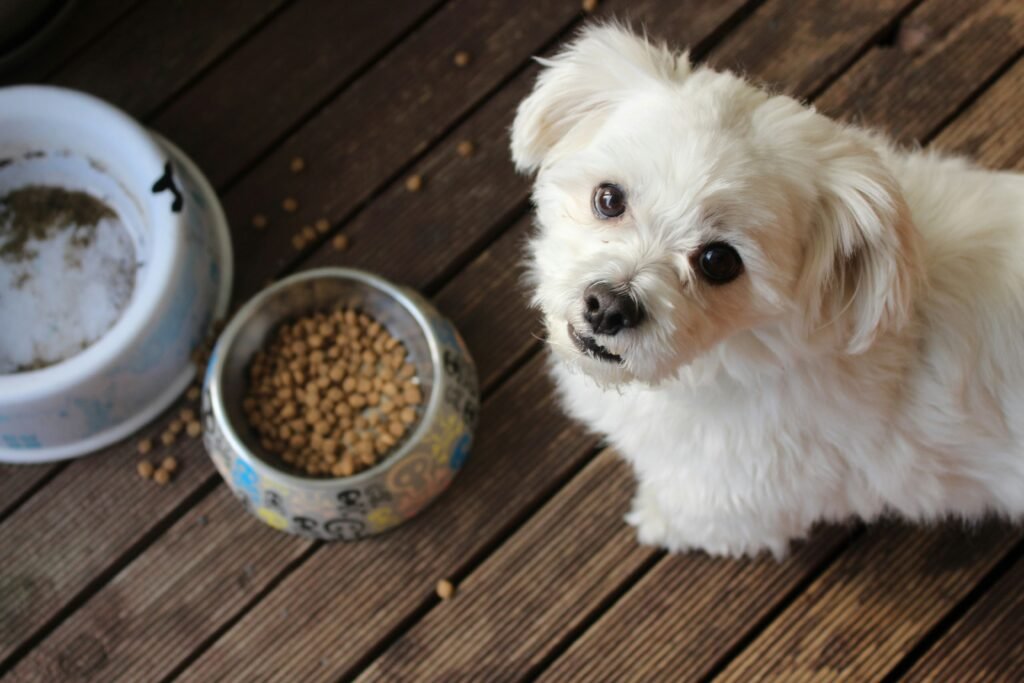
4.Large Breed Dogs: Why Bigger Doesn’t Mean More Food
Let’s debunk another myth:
“Large dogs just need bigger portions of the same food.”
Nope — it’s not just about quantity.
In fact, overfeeding or giving high-calorie food to a large breed dog — especially a puppy — can do real damage. Too much too fast can lead to joint issues, hip dysplasia, or even bone deformities.
The trick? Focus on quality, not quantity. Here’s what to know:
Nutritional Needs for Large Breeds
Large breed dogs like Labs, Golden Retrievers, and Rottweilers need:
Controlled Calories: Prevent obesity and joint stress.
Joint Support: Look for added glucosamine and chondroitin.
Larger Kibble Size: Slows down eating to reduce bloating risk.
Balanced Calcium & Phosphorus: Supports healthy bone growth in puppies.
Best Types of Food for Large Breeds
When choosing between food types, think function:
Dry Kibble: Look for bigger pieces and joint-support formulas.
Wet Food: Great for hydration but go easy on calorie count.
- Avoid Overfeeding: Stick to the recommended portion on the label or use a dog food calculator.
Recommended Brands for Large Breeds
Some solid options that balance nutrition and budget:
Authority Large Breed Dog Food – high in protein, has glucosamine for joint health.
Hill’s Science Diet Large Breed – vet-recommended, perfect for joint and bone support.
Purina Pro Plan Large Breed – high-protein option, includes live probiotics.
Puppy-Specific Picks for Large Breeds
Feeding a large breed puppy is a whole different game.
Don’t Overfeed: They need slow and steady growth.
DHA is Crucial: Helps brain and vision development.
Avoid High-Calorie Food: Look for food labeled “large breed puppy formula”.
Popular searches like “what is the best dog food for large breed puppies” often mean the user wants something safe, vet-approved, and growth-appropriate — not just any “puppy food.”
Also, Large breed puppies need slower, steady growth to avoid joint issues. According to VCA Animal Hospitals, overfeeding can actually lead to long-term skeletal problems.
5.Small vs Large Breed Dog Food: Quick Comparison Table
Okay, let’s make this super easy for you to digest (pun intended). Here’s a simple side-by-side breakdown that shows exactly how dog food differs for small and large breed dogs — so you’re never confused at the pet store again:
| Feature/Need | Small Breed Dog Food | Large Breed Dog Food |
|---|---|---|
| Kibble Size | Tiny, easy-to-chew bites | Bigger pieces to slow chewing |
| Calorie Density | Higher (per cup) — supports fast metabolism | Moderate — avoids overfeeding |
| Protein & Fat Ratio | Higher fat + protein to fuel energy | Controlled fat, balanced protein |
| Joint Support (Glucosamine) | Not always needed unless senior dog | Essential — supports hips, joints, and bones |
| Ideal For | Chihuahuas, Yorkies, Shih Tzus, Dachshunds | Labs, Goldens, Rottweilers, Shepherds |
| Common Labels to Look For | “Small breed,” “toy breed,” “high energy,” “small kibble” | “Large breed,” “joint support,” “bone health,” “puppy” |
| Common Health Concerns | Dental, picky eating, hypoglycemia | Obesity, joint stress, bloat |
6.Feeding Guide: How Much to Feed Based on Breed Size
Here’s the biggest mistake most dog owners make:
“I just fill the bowl when it’s empty.”
Yikes — that’s how overweight dogs happen.
Feeding the right amount matters just as much as picking the right food. Whether you’re feeding a tiny furball or a gentle giant, getting the portions right keeps them healthy, active, and happy.
Let’s break it down:
Portion Guidelines for Small Breeds
Small dogs need calorie-dense food, but in smaller amounts. Feeding too much can lead to weight gain or digestive issues.
| Weight | Daily Portion (Dry Food) |
|---|---|
| Under 5 lbs | 1/4 to 1/2 cup |
| 5–10 lbs | 1/2 to 3/4 cup |
| 10–20 lbs | 3/4 to 1.25 cups |
| 20–25 lbs | 1.25 to 1.5 cups |
Pro Tip: Divide portions into 2–3 meals a day to prevent hypoglycemia (especially in toy breeds).
Portion Guidelines for Large Breeds
With large dogs, it’s all about portion control. Overfeeding can trigger joint issues, obesity, or digestive problems like bloat.
| Weight | Daily Portion (Dry Food) |
|---|---|
| 50–70 lbs | 2.5 to 3.5 cups |
| 70–90 lbs | 3.5 to 4.25 cups |
| 90–110 lbs | 4.25 to 5 cups |
| 110+ lbs | 5 to 6 cups |
Tip: Always use a measuring cup, and if you’re giving wet food or mixing toppers, adjust portions accordingly.
Feeding the right amount isn’t just about avoiding weight gain. The AVMA highlights that balanced nutrition and portion control not only affect your dog’s lifespan but also reduce obesity-related diseases like arthritis and diabetes.
7.Common Mistakes People Make When Choosing Dog Food by Breed Size
Alright, let’s be real. Picking dog food isn’t just about the fancy label or the “vet recommended” badge. People (even the most loving dog parents) mess up sometimes — and most of the time, it’s not their fault. It’s just confusion.
So here’s a list of the most common mistakes folks make when feeding their pups based on breed size:
Using the Same Food for All Breeds
No, your Yorkie shouldn’t eat the same food as your neighbor’s Great Dane.
Why? Because their bodies are built differently.
Small breeds need calorie-rich food in small servings, while large breeds need joint-friendly, controlled-calorie food.
Ignoring Kibble Size
If you’ve got a tiny pup, and you’re feeding them big chunky kibble — you’re basically handing them jaw workouts.
Small breed dogs often struggle to chew large kibble, which can lead to choking or skipped meals.
Meanwhile, large dogs need larger kibble to avoid gulping it down too fast (hello, bloating!).
Feeding Large Breed Puppies Regular Puppy Food
Here’s a major one.
Regular puppy food = too many calories + calcium, which can make your large breed puppy grow too fast.
And fast growth = stress on joints, bones, and hips.
Always go with food labeled: “Large Breed Puppy Formula.” That way, you’re controlling their growth safely and avoiding issues like hip dysplasia.
Skipping Joint Support in Large Breeds
If your big pup (like a Labrador or Rottweiler) doesn’t already have glucosamine and chondroitin in their food, you’re missing out.
These joint-supporting ingredients are essential for large dogs — especially seniors or working breeds.
Buying Food Without Reading the Label
Too many people choose food based on brand hype instead of ingredients.
But your goal is to find a formula that matches your dog’s:
Breed size
Age
Activity level
Sensitivities (like grains, fillers, etc.)
Always check for things like:
Named protein first (chicken, beef, salmon)
Clear size/breed targeting (small breed / large breed)
Avoid mystery “meat by-products” and artificial dyes
8.Final Tips + Vet-Backed Advice
Let’s land this blog with some expert-backed tips to make sure you always feed your dog the right food, the right way.
Talk to Your Vet (Yes, Seriously)
Even if you’re using the best small breed dog food or the top-rated large breed formula — it’s still smart to check with your vet.
Why?
Because your vet knows your dog’s medical history, metabolism, activity level, and breed-specific health risks.
And remember: your dog is unique.
A high-energy Pitbull won’t eat the same as a chill senior Husky — even if they’re the same weight.
Don’t Be Brand Loyal, Be Dog Loyal
Just because a brand is famous doesn’t mean it’s right for your pup.
Always observe how your dog reacts to the food:
Is their coat shiny?
Are they energetic?
Any digestion issues?
Switch if needed. Your dog’s health comes first — not the brand’s ad campaign.
Final Takeaway
Feeding your dog based on their breed size isn’t just smart — it’s essential.
It impacts their energy, joints, digestion, and lifespan.
So don’t fall for one-size-fits-all solutions.
Use size-specific food, measure portions right, and choose brands that truly match your dog’s needs.
9.Best Dog Food Brands by Breed Size (With Examples)
Let’s make shopping easier. Below is a curated list of top dog food brands — split by small and large breed dogs — based on nutrition, real reviews, and veterinarian approval. These aren’t just “popular” picks… they actually work.
Best Dog Food for Small Breeds
Small dogs = fast metabolism + picky taste.
You need something that’s nutrient-dense, tasty, and easy to chew.
Here are the top-rated dog foods for small breeds:
| Brand & Product | Why It’s Great | Ideal For |
|---|---|---|
| Wellness CORE Small Breed | High protein, grain-free, rich in omega fats | Active small dogs, picky eaters |
| Royal Canin Small Adult | Vet-recommended, designed for dogs under 22 lbs | Everyday feeding |
| Blue Buffalo Life Protection Small | Real meat first, antioxidants, good for coat & immune health | Dogs with sensitive stomachs |
| Hill’s Science Diet Small Bites | Vet-trusted, gentle on digestion, dental-support kibble | Senior small dogs or low-energy |
| Authority Small Breed Adult | Affordable + balanced, great for everyday health | Budget-friendly small dog food |
Best Dog Food for Large Breeds
Large dogs need controlled calories, joint protection, and bloat-safe nutrition.
Here are some of the best formulas for large breed adults and puppies:
| Brand & Product | Why It’s Great | Ideal For |
|---|---|---|
| Blue Buffalo Life Protection Large | Glucosamine added, real meat, balanced for big breeds | Active large dogs |
| Hill’s Science Diet Large Breed Adult | Vet-approved, supports healthy joints and mobility | Everyday adult feeding |
| Nutro Ultra Large Breed | Blend of 3 proteins (chicken, lamb, salmon) + whole grains | Dogs needing extra muscle support |
| Royal Canin Large Puppy | Controls growth, protects bones and joints | Puppies prone to fast weight gain |
| Authority Large Breed Adult | Affordable, complete nutrition, includes joint care nutrients | Best budget dog food for large dogs |
FAQs About Dog Food by Breed Size
Let’s tackle the questions dog parents are actually Googling (and whispering to their vets). Here’s what most folks are confused about — explained simply and clearly:
Can I feed the same dog food to all dog breeds?
Not really. Different dog breeds (and breed sizes) have very different needs.
Small breeds usually need more calories per pound, while large breeds need controlled calories and joint support. Feeding them the same food might not hurt immediately — but it can cause health problems in the long run.
What’s the difference between large breed and small breed dog food?
Great question! The main differences are:
Kibble size (big dogs = big bites)
Calorie density (small breeds = higher calories per bite)
Nutrients (large breeds need glucosamine, controlled calcium, etc.)
Each is tailored to the dog’s body size, growth rate, and metabolism.
Is kibble size really that important?
Yes! Small dogs may choke on large kibble, and large dogs might gulp down small kibble and risk bloating.
So yes — kibble size should match jaw size and chewing style. It’s not just a cosmetic thing.
What is the best dog food for large breed puppies?
Look for formulas labeled “Large Breed Puppy” — these have:
Controlled calcium
Right calorie balance
Joint-support nutrients
This slows down growth to prevent issues like hip dysplasia.
Top picks include Royal Canin Large Puppy and Blue Buffalo Large Breed Puppy.
Are small breeds more likely to be picky eaters?
Absolutely. Small dogs often have sensitive stomachs and strong preferences.
That’s why you need:
Small, crunchy kibble
High-flavor ingredients (like salmon or lamb)
Balanced fat and protein
Look into Wellness CORE Small Breed or Authority Small Breed as solid options.
Do large breeds really need joint supplements in food?
For sure. Especially breeds like Labs, Shepherds, or Rotties.
Their joints take a lot of pressure, so glucosamine and chondroitin can help prevent future issues.
It’s always better to support their hips before problems show up.
Are grain-free foods better for small breeds?
Not always. Grain-free isn’t automatically better — unless your dog has allergies or sensitivities.
In fact, too much grain-free food has been linked to heart issues in some dogs (like DCM).
So, go grain-free only when needed, and make sure the food has balanced nutrition.
What if my small dog is overweight — should I still feed “small breed” formulas?
Yes, but choose a weight-management formula made for small breeds.
These offer:
Lower calories
High protein
Added fiber to keep them full
How often should I change my dog’s food?
Only when necessary — like if your dog’s:
Getting older
Gaining/losing weight
Developing allergies
Losing interest in food
When you switch, transition slowly over 7–10 days to avoid tummy troubles.
Final Thoughts: Feed Smarter, Not Harder
Feeding your dog the right food based on their breed size isn’t some fancy trend — it’s essential to their health, happiness, and energy.
Here’s what you should take away:
Small breeds = more calories, smaller kibble, rich flavors
Large breeds = joint support, controlled growth, and slower digestion
Puppies ≠ Adults ≠ Seniors — all have different needs
Use tools to take the guesswork out
And remember — your dog can’t read labels or compare protein levels. But you can.
So be their best friend. Make smart, intentional feeding choices.
And if you’re ever stuck, this blog (and our tools) are here to help

